SELECTED FOREIGN CORRESPONDENCE
THE GUARDIAN: OCTOBER 2022
FIGHTING OFF THE BULLDOZERS IN THE SACRED KWILA FORESTS OF PNG
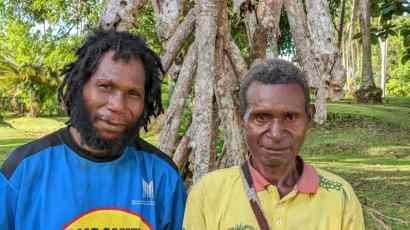 I returned to PNG in September 2022 – thanks to the Walkley Foundation/Sean Dorney Pacific Journalism Grant – mostly to collect field reports and interviews for my climate justice story for The Monthly. But as always in PNG, there are just so many stories. I was in Madang when I heard claims that a sacred matmat had been devastated by loggers operating without authority. A large delegation of men from the community walked out of their forest to catch a PMV into town to spend a long day recounting what had occurred. (Pictured left are two of them, Bryan Lavate, secretary of the local landowners association, and Suburam village chief Sandu Ovot, whose ancestors graves were desecrated.) It was the beginning of a complex piece of reporting trying to figure out the labyrinthine, murky world of Malaysian logging companies active across PNG. For a variety of reasons I wasn’t satisfied with how this piece turned out – I didn’t have the time, resources or word-count to do the nuanced issues justice. But I hope to return to this topic if not this incident. And I hope that this report may achieve something useful for the community. Here’s the link: https://www.theguardian.com/world/2022/oct/09/fighting-off-the-bulldozers-in-the-sacred-kwila-forests-of-papua-new-guinea
I returned to PNG in September 2022 – thanks to the Walkley Foundation/Sean Dorney Pacific Journalism Grant – mostly to collect field reports and interviews for my climate justice story for The Monthly. But as always in PNG, there are just so many stories. I was in Madang when I heard claims that a sacred matmat had been devastated by loggers operating without authority. A large delegation of men from the community walked out of their forest to catch a PMV into town to spend a long day recounting what had occurred. (Pictured left are two of them, Bryan Lavate, secretary of the local landowners association, and Suburam village chief Sandu Ovot, whose ancestors graves were desecrated.) It was the beginning of a complex piece of reporting trying to figure out the labyrinthine, murky world of Malaysian logging companies active across PNG. For a variety of reasons I wasn’t satisfied with how this piece turned out – I didn’t have the time, resources or word-count to do the nuanced issues justice. But I hope to return to this topic if not this incident. And I hope that this report may achieve something useful for the community. Here’s the link: https://www.theguardian.com/world/2022/oct/09/fighting-off-the-bulldozers-in-the-sacred-kwila-forests-of-papua-new-guinea
THE GUARDIAN: AUGUST 2022
ENOUGH IS ENOUGH: THE FIGHT TO ELECT WOMEN ELECTED IN PNG’S MEN-ONLY PARLIAMENT
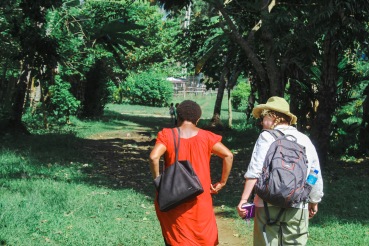 It was great to get back on the road reporting in 2022, and even better to be in Papua New Guinea after three years absence – again, thanks to the Sean Dorney Grant for Pacific Journalism. One happy consequence of the delays to my long-planned trips as a consequence of Covid was that I was able to time one of my field trips to coincide with the 2022 PNG National Election. This allowed me to return to an issue I’ve reported on often over the years – the near invisibility of women in PNG politics. Nearly 10 years ago, I wrote a long reportage piece for Griffith Review on the push for female representation, and the formidable obstacles female candidates face. Then, there were three women in the parliament, but for the past five years there were none. I timed this latest trip to coincide with the PNG National Elections, and spend time with some of the leading women candidates – amazing women who deserve a seat. Whether they will get one is still in the balance as I write. The story was published online by The Guardian, and also as a full page feature in the UK print edition. Read it here.
It was great to get back on the road reporting in 2022, and even better to be in Papua New Guinea after three years absence – again, thanks to the Sean Dorney Grant for Pacific Journalism. One happy consequence of the delays to my long-planned trips as a consequence of Covid was that I was able to time one of my field trips to coincide with the 2022 PNG National Election. This allowed me to return to an issue I’ve reported on often over the years – the near invisibility of women in PNG politics. Nearly 10 years ago, I wrote a long reportage piece for Griffith Review on the push for female representation, and the formidable obstacles female candidates face. Then, there were three women in the parliament, but for the past five years there were none. I timed this latest trip to coincide with the PNG National Elections, and spend time with some of the leading women candidates – amazing women who deserve a seat. Whether they will get one is still in the balance as I write. The story was published online by The Guardian, and also as a full page feature in the UK print edition. Read it here.
THE GUARDIAN: DECEMBER 2019
REFUGEES IN THEIR OWN LAND: THE WEST PAPUANS IN LIMBO IN PNG
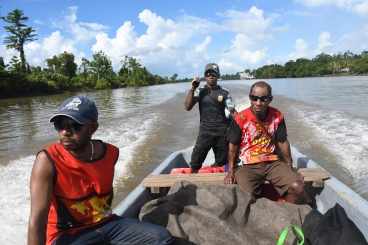 Several years ago, researching a story on land grabbing (tree stealing) near Kiunga on the PNG border, I ran into a PNG nurse and nun who was climbing into a dinghy to take a trip down the Fly River. She told me she was taking vaccines to children in the refugee camps. “What refugee camps?” I had no idea. Finally, I made it there myself, to visit the largely forgotten populations of West Papua refugees who fled to the PNG side of the border some 30 years ago. It was a difficult, dangerous and deeply confronting trip. Link here to my story for The Guardian.
Several years ago, researching a story on land grabbing (tree stealing) near Kiunga on the PNG border, I ran into a PNG nurse and nun who was climbing into a dinghy to take a trip down the Fly River. She told me she was taking vaccines to children in the refugee camps. “What refugee camps?” I had no idea. Finally, I made it there myself, to visit the largely forgotten populations of West Papua refugees who fled to the PNG side of the border some 30 years ago. It was a difficult, dangerous and deeply confronting trip. Link here to my story for The Guardian.
THE NEW YORK TIMES: NOVEMBER 2018
PAPUA NEW GUINEA IS RICH IN RESOURCES BUT POOR IN HEALTH
 I’ve had a deep interest in reporting on health and disease dating back to my years as health reporter for The Age. I’ve reported on health emergencies in Nigeria, Malawi, Mozambique, Democratic Republic of Congo and, often, PNG. As a serial visitor and close observer of PNG, I’ve been tuned in to the growing distress and anger of health workers at the collapse of supply lines of basic medicines and equipment to hospitals and clinics right across the country. Social media has been churning with reports of desperate and often grieving families. All over the country, there are symptoms of a profound public health emergency; young and old are getting sick and dying unnecessarily. This is my story for the New York Times. Link here.
I’ve had a deep interest in reporting on health and disease dating back to my years as health reporter for The Age. I’ve reported on health emergencies in Nigeria, Malawi, Mozambique, Democratic Republic of Congo and, often, PNG. As a serial visitor and close observer of PNG, I’ve been tuned in to the growing distress and anger of health workers at the collapse of supply lines of basic medicines and equipment to hospitals and clinics right across the country. Social media has been churning with reports of desperate and often grieving families. All over the country, there are symptoms of a profound public health emergency; young and old are getting sick and dying unnecessarily. This is my story for the New York Times. Link here.
THE ATLANTIC & UNDARK: OCTOBER 2017
THE THREAT OF POLIO IN THE BADLANDS OF BOKO HARAM (NORTHERN NIGERIA)
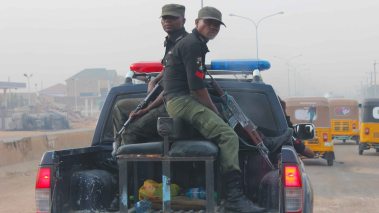 In 2017 I travelled to northern Nigeria to research a story on the final push to wipe out wild poliovirus from the last crucibles of disease in terrorised parts of Nigeria, Afghanistan and Pakistan. Together with two other journalists, one from the UK Observer and a Canadian medical writer, we accompanied teams of vaccinators as they rolled across the country in a massive, coordinated effort. The program is not merely logistically massive, but politically deeply explosive – the terrorists of Boko Haram oppose use of the vaccine, and disinformation about it’s purpose and effects is rife. The bravery of the teams of women, walking through dangerous and hostile territory armed only with their convictions and boxes of polio vaccine, was extraordinary. Commissioned by Undark magazine, it was co-published in The Atlantic.
In 2017 I travelled to northern Nigeria to research a story on the final push to wipe out wild poliovirus from the last crucibles of disease in terrorised parts of Nigeria, Afghanistan and Pakistan. Together with two other journalists, one from the UK Observer and a Canadian medical writer, we accompanied teams of vaccinators as they rolled across the country in a massive, coordinated effort. The program is not merely logistically massive, but politically deeply explosive – the terrorists of Boko Haram oppose use of the vaccine, and disinformation about it’s purpose and effects is rife. The bravery of the teams of women, walking through dangerous and hostile territory armed only with their convictions and boxes of polio vaccine, was extraordinary. Commissioned by Undark magazine, it was co-published in The Atlantic.
This story was a finalist in the 2018 Australia Museum Eureka Prizes in the science journalism category. See the clip on the story here: https://youtu.be/LH3JynCWSi8
ABC RADIO NATIONAL: BACKGROUND BRIEFING April 2016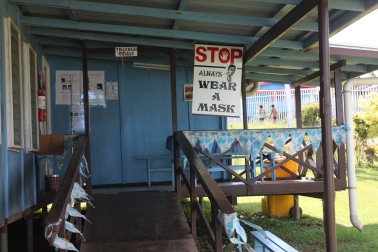
Five years after the alarm was raised on the drug resistant tuberculosis emergency in PNG, the worst fears of experts about its spread are being realised. I go back to Daru, the outbreak front line, for my debut as a radio journalist reporting for the ABC. Find the podcast here. Update: This story is a finalist in the Australia Museum Eureka Prizes, in the Science Journalism category.
The SYDNEY MORNING HERALD/ THE AGE 9 May 2015
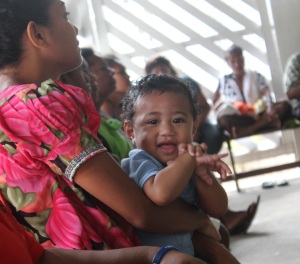 Family Planning: A Matter of Life and Death
Family Planning: A Matter of Life and Death
A different take on Mother’s Day: In Papua New Guinea, where maternal deaths are amongst the highest in the world, 44 per cent of women of fertile age and in a relationship report an “unmet need” for contraception. That means they have little if any capacity to space, delay or stop having babies. My story for The Age/Sydney Morning Herald on efforts to get contraception into communities – and the Catholic backlash. Picture: Jo Chandler Story here: http://www.theage.com.au/world/papua-new-guineas-young-women-desperate-for-contraception-20150509-ggxjvs.touch.html?skin=smart-phone
THE GLOBAL MAIL: FEBRUARY 2013
‘It’s 2013, And They’re Burning Witches’ (Picture: Vlad Sokhin)
‘Sister Gaudentia knew immediately the spectacle the excited children were rushing to see. They were on their way to a witch-burning. There are many names for dark magic in the 850 tongues of Papua New Guinea, sanguma resonating widely in these mountains. The 74-year-old sister hurriedly rounded up some of her staff, loaded them in a car and followed the crowd, with a strong foreboding of what she would find.’
Note: The Global Mail was an award-winning but short-lived international news website, based in Sydney and underwritten by a philanthropic donation. I was a regular contributor to The Global Mail over 12 months until it’s demise in 2014. Unfortunately the site was decommissioned and much of the content lost. The links here are to archive copies, so they are a bit glitchy – sorry.
THE GLOBAL MAIL: JUNE 2013
‘Plagued: TB and Me’ (Picture: Vlad Sokhin)
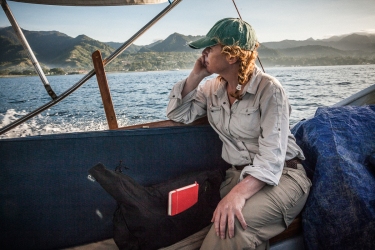 In 2011, I travelled to Daru island for The Age and The Sydney Morning Herald to report on the drug resistant tuberculosis emergency that had exploded there. Contagion rates were among the highest in the world. This was a story that would define my life in ways I could never have forseen. ‘Sometime in those few days, somewhere, someone coughed or sneezed or sang or laughed, spraying a cloud of invisible Mycobacterium tuberculosis into the air, and I inhaled. By the time my ride out finally materialises on the tarmac and I click my heels for home, it seems I have a stowaway. Eighteen months later, in March 2013, I am diagnosed with multidrug-resistant tuberculosis (MDR TB). Let’s call it accidental immersion journalism.’
In 2011, I travelled to Daru island for The Age and The Sydney Morning Herald to report on the drug resistant tuberculosis emergency that had exploded there. Contagion rates were among the highest in the world. This was a story that would define my life in ways I could never have forseen. ‘Sometime in those few days, somewhere, someone coughed or sneezed or sang or laughed, spraying a cloud of invisible Mycobacterium tuberculosis into the air, and I inhaled. By the time my ride out finally materialises on the tarmac and I click my heels for home, it seems I have a stowaway. Eighteen months later, in March 2013, I am diagnosed with multidrug-resistant tuberculosis (MDR TB). Let’s call it accidental immersion journalism.’
This story was awarded the Melbourne Press Club Quill award for feature writing.
THE GLOBAL MAIL: DECEMBER 2012
‘Up The Fly Without A Paddle’
‘PNG is also blighted by horrifying rates of maternal death — an estimated 733 deaths per 100,000 live births. In Australia — cruelly, the invisible frontier between one of the best health systems in the world and one of the worst can be crossed with just another short boat ride — the equivalent figure is 8.4 nationally, but a poorer 21.5 if you are indigenous. Like the health teams dispatched up the Fly, I went looking for evidence of a rumoured emergency, but found instead merely endemic tragedy with all the imponderable questions it raises.’
A PNG SAMPLER: (Collected stories, by theme)
Political Analysis
‘Viewpoint: Does PNG Back Australia’s Asylum Deal?’ BBC Asia (9 August 2013)
http://www.bbc.co.uk/news/world-asia-23598226
‘PNG teetering on fault line’: The Age and The Sydney Morning Herald (3 September 2011)
Women’s Health & Society
‘A Mother’s Life’: The Age and The Sydney Morning Herald (7 September 2009)
http://www.theage.com.au/world/a-mothers-life-20090906-fcr6.html
‘Where Women Fear To Tread’: The Age and The Sydney Morning Herald (27 March 2012)
http://www.smh.com.au/world/where-women-fear-to-tread-20120326-1vumr.html
Land & Environment/Resources
Little Common Ground as Land Grab Splits a People: The Age and The Sydney Morning Herald (14 October 2011)
http://www.smh.com.au/world/little-common-ground-as-land-grab-splits-a-people-20111014-1lp09.html
DATELINE: ANTARCTICA
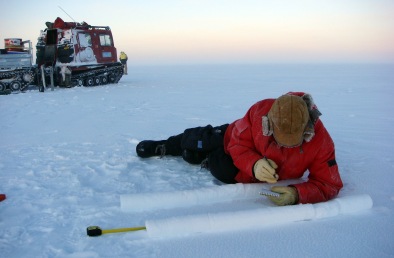 ‘Icy Work May Hold Key to a Brighter Future’ (Picture: Jo Chandler)
‘Icy Work May Hold Key to a Brighter Future’ (Picture: Jo Chandler)
The Age, 18 January 2008
‘Their prize today seems relatively modest – two boxes of ice holding about a decade of data. But used in conjunction with other recent climate measurements – taken by satellites and weather stations – and deeper Law Dome cores holding remnants of climate dating back 80,000 years, it becomes immensely powerful. Salt residue from sea spray reveals the strength of long-exhausted winds, sulphur traces track the vigour of the biological world, and chemical signatures provide a record of past temperature changes. What it means, Dr Curran says, is that we can travel back in time to reconstruct climate history, and throw forward to anticipate its future.’
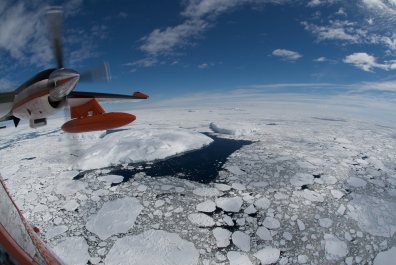 ‘Frontier Scientists Track Whales in the Ice’ (Picture: Dan Colborne)
‘Frontier Scientists Track Whales in the Ice’ (Picture: Dan Colborne)
The Age, 4 January 2010
‘Over the past three summers the team has been flying low over a meticulously mapped route across the Antarctic coast; over great fields of pack ice, hunting Minke whales. This is deep-field, frontier science, the mission to study and count the whales in habitats so thick with ice that ships can never penetrate to find them.’
‘A Day in the Life of Antarctica’s Penguin Poo Sleuths’ (Picture: Angela Wylie, The Age)
The Age, 16 January 2008
‘These birds are canaries in the coalmine in climate change terms. Any loss or movement in the krill and plankton and other creatures that nurture the Adelies and the rest of the marine population will rapidly be reflected in these rookeries. Similarly, any disturbances to the pack ice that provides the platform for their feeding trips will soon translate into thinning Adelie communities.’
DATELINE: AFGHANISTAN
‘Heart of the battle’ The Age (Insight), 31/10/2009
‘As teachers of girls in Oruzgan province, noted for its deep conservatism and its desperate poverty, the women in blue are revolutionaries and potential targets of the Taliban. Their daily walk to school is an act of mute heroism; their only armour the anonymity allowed by their burqas. Their courage leaves the soldiers shaking their heads.’
Click to access Afghanstorytext.pdf
‘Soldiers feel the heat of home’ The Age, 17/10/09
DATELINE: AFRICA (SELECTED STORIES)
(The Age/SMH, 2005)
CASUALTIES OF WAR: DEMOCRATIC REPUBLIC OF CONGO
(The Age/SMH, 2008)
(The Age/SMH, 2008)
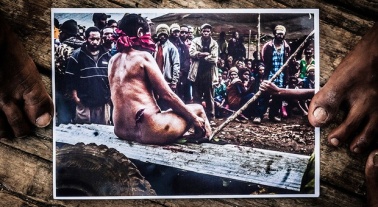
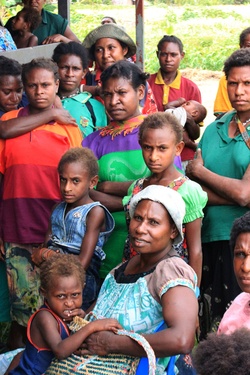
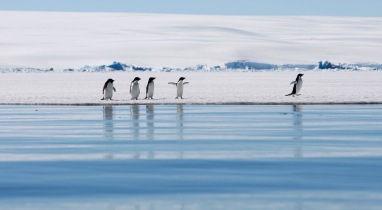
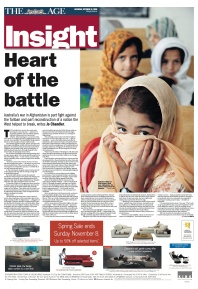
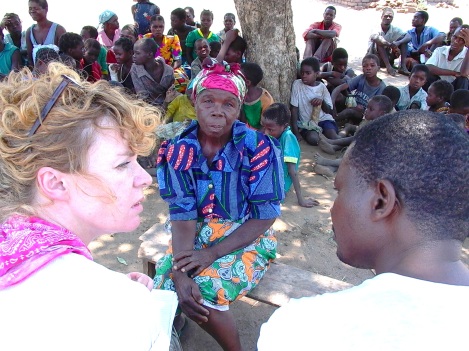 MALAWI’S FORGOTTEN FAMINE
MALAWI’S FORGOTTEN FAMINE